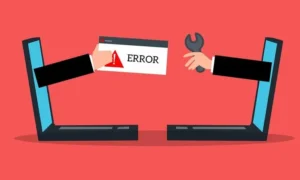7 Steps to Implementing Technology Solutions for a Smarter Business
In an era defined by digital transformation and rapid technology breakthroughs, organizations face tremendous opportunities and difficulties. Embracing technology solutions is no longer an option; it is a must for firms that want to remain competitive and grow in today’s industry. Businesses that proactively use digital solutions can increase efficiency productivity, and open up new growth prospects. Here are seven critical steps to help organizations leverage technology for a smarter business, more flexible, and future-ready operation.
7 Must-Follow Steps for a Smarter Business
1. Assess Needs and Challenges
Before deploying technology solutions, undertake a thorough assessment of your organization’s current needs, challenges, and possibilities. Identify pain spots, inefficiencies, and opportunities for improvement in various business functions, including operations, sales, marketing, finance, and customer service. Engage key stakeholders, solicit feedback, and select initiatives according to their potential influence on business objectives and strategic goals.
2. Establish explicit Objectives and Goals
After identifying areas for improvement, set explicit objectives and goals for your technological projects. Create measurable key performance indicators (KPIs) that correspond to your business goals, such as boosting operational efficiency, lowering expenses, improving customer happiness, or driving revenue growth. Setting specific goals will provide direction and emphasis for your technology adoption efforts, allowing you to track progress and measure success properly.
3. Research and analyze Technology Solutions
After defining your objectives and goals, analyze technology options that meet your business demands and budget. When evaluating technology solutions, consider functionality, scalability, ease of integration, vendor reputation, and total cost of ownership (TCO). Use industry reports, peer reviews, and vendor demos to guide your decision-making and select solutions that are the best fit for your organization’s needs.
4. Create a Technology Roadmap
Outline the implementation timetable, milestones, and dependencies for your chosen technology solutions. Divide your activities into digestible phases or sprints, prioritizing key work and ensuring alignment with business objectives. Establish clear timetables, responsibilities, and checkpoints to assess progress, handle concerns quickly, and keep your technological efforts on track.
5. Secure Buy-In and Support
Successful technology deployment requires buy-in and support from key stakeholders. Communicate the benefits and value propositions of your projects clearly and respond to concerns and objections proactively. Engage with leaders, department heads, and end users to achieve consensus, encourage collaboration, and gain support for your technology roadmap. Create a governance structure and communication strategy to keep stakeholders informed and engaged during the implementation phase.
6. Implement and Test Technology Solutions
After establishing a strategy and obtaining stakeholder buy-in, begin implementing your chosen technology solutions. Follow best practices and project management approaches to ensure that your efforts are completed on time, within budget, and to high-quality standards. Before deploying solutions to production environments, perform extensive testing and quality assurance to detect and resolve any issues or errors. Provide end-user training and support to help them adopt new technologies and migrate smoothly.
7. Monitor, measure, and iterate
Once your IT solutions have been implemented, track performance, measure results, and solicit feedback to assess their efficacy and impact on business outcomes. Use analytics and reporting tools to monitor important indicators and KPIs, identifying areas of success and opportunities for improvement. Solicit feedback from end users and stakeholders to get insights and identify areas for future optimization or improvement. Iterate on your IT projects on a regular basis, using insights and lessons learned to fine-tune business strategy and generate continued innovation and development.
Final Words
Implementing digital solutions for a smarter organization needs meticulous strategy, execution, and ongoing iteration. Following these seven stages can help firms efficiently negotiate the complexity of technology adoption, resulting in increased efficiency, productivity, and growth. Embrace innovation, harness the power of technology, and prepare your company to prosper in the digital age.














Post Comment